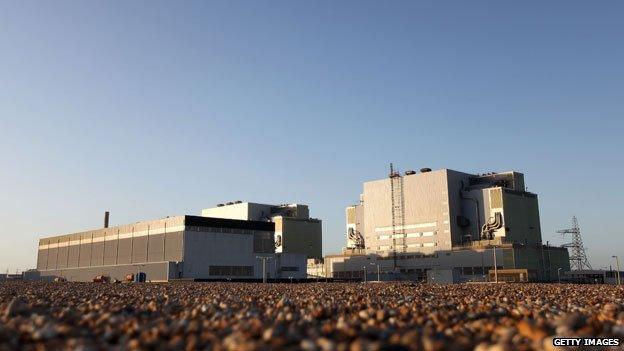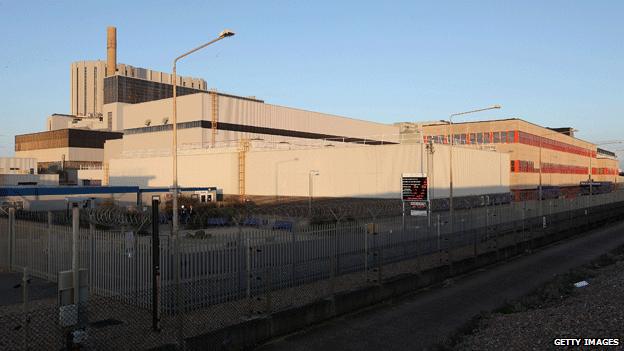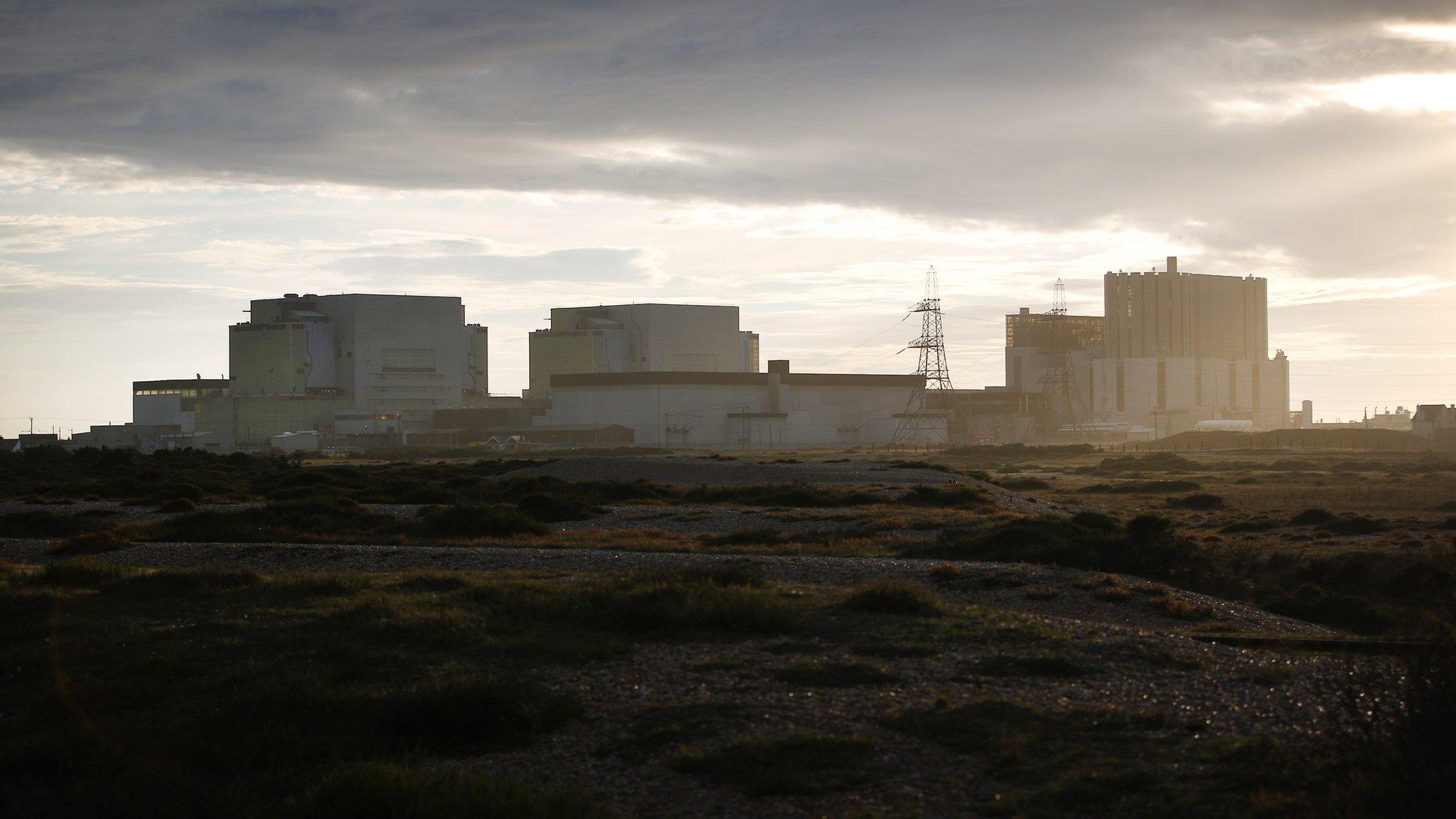Dungeness B nuclear plant operator wants safety limit raised
- Published

Dungeness power station is owned by French energy giant EDF
A key safety limit at one of Britain's nuclear power stations is being raised to allow the life of the reactor to be extended, the BBC has learned.
The regulator has agreed to increase the amount of weight graphite bricks at the core of the reactor at Dungeness B in Kent will be allowed to lose.
The bricks, which degrade over time due to radiation, are vital for safety.
The Office for Nuclear Regulation said it was a "robust" body but one expert accused it of "moving the goalposts".
The nuclear reactor at Dungeness B would have breached the safety margin within months which could have forced the Office for Nuclear Regulation (ONR) to prosecute or even shut it down.
The safety margins cover thousands of graphite bricks at the core of Britain's 14 elderly Advanced Gas-cooled Reactors (AGRs).
But the bricks, each about a metre in height, are both cracking and starting to lose weight due to decades of radiation, and that could affect safety.
The current graphite weight loss limit for Dungeness is set at 6.2% but the regulator says when it reached 5.7% its operator, French power giant EDF, applied to raise it to 8%.
Mark Foy, deputy chief inspector at the Office for Nuclear Regulation, said "We will be in a position to agree that 8% limit within the next few weeks. Ageing is a nuclear safety issue".
As part of that ageing process the licensee was required to monitor and inspect the reactors regularly.
Control rods
Steve Thomas, professor of energy policy at the University of Greenwich, said: "It doesn't feel good when we come up against limits and the first thing they [the ONR] do is to move the goalposts."
Mr Foy stressed that the ONR was a "robust regulator" and due process had been followed.

The Office for Nuclear Regulation is responsible for checking safety at nuclear plants
"If we feel the evidence they [EDF] have supplied is robust and sufficient to underpin the 8% case then we will agree it," he said.
The graphite bricks are integral to UK nuclear power stations and they act to moderate the nuclear reaction; it will not function without them.
The bricks cannot be replaced which means they are being carefully monitored as the reactors age. They become damaged through years of intense bombardment by radiation and effects of the coolant CO2 on the material.
A distortion to the graphite core could prevent the control rods being inserted, which shut down the reactor in an emergency.
EDF said "safety of the public and our employees is our overriding priority" and the company took a "cautious approach" working closely with the regulator and they operated with "very conservative safety margins" and safety requirements were "stringent".
But in shifting the graphite limit Dungeness can still run only until the start of 2020 but that is still three years fewer than EDF would like and it may have to request a second increase in the safety limit.
'Crunch point'
Prof Paul Mummery, from Manchester University, agreed that the original limits were "conservative."
But he said the twin problems of graphite cracking and weight loss meant it may be "uneconomic" for EDF to keep all the 14 AGR reactors running in the long term because the regulator may insist on more inspections to demonstrate safety.
Prof Paul Mummery looks at the changes taking place to graphite bricks inside the reactor
"They [EDF] are making good progress but I would not be able to say with absolute confidence that they will reach 2023," he said.
It was an "engineering judgement", he said, but "no one could be sure".
"There was more weight loss than expected in Dungeness B and that has led to some uncertainty about the continued operation."
The AGR reactors contribute about 15% of Britain's electricity, according to Prof Thomas.
He said EDF wanted the old AGR reactors to last until the planned next generation of nuclear power stations came on line after 2023 but said it was reaching a "crunch point".
The old reactors might not last as long as EDF would like and there were still real doubts about the plans to build the new reactor at Hinkley C in Somerset.
- Published28 May 2014

- Published24 April 2014

- Published22 March 2014

- Published21 October 2013
